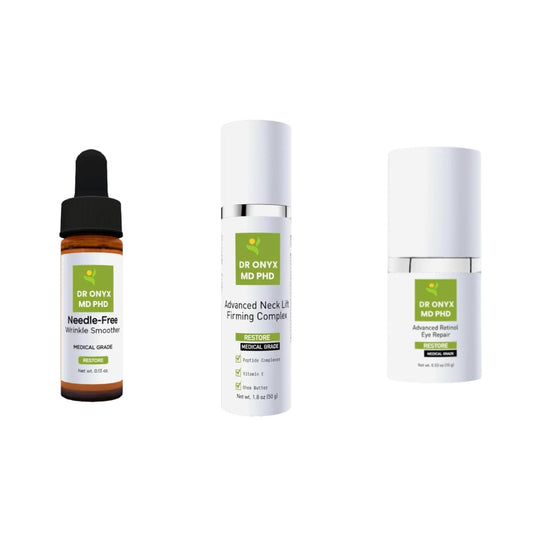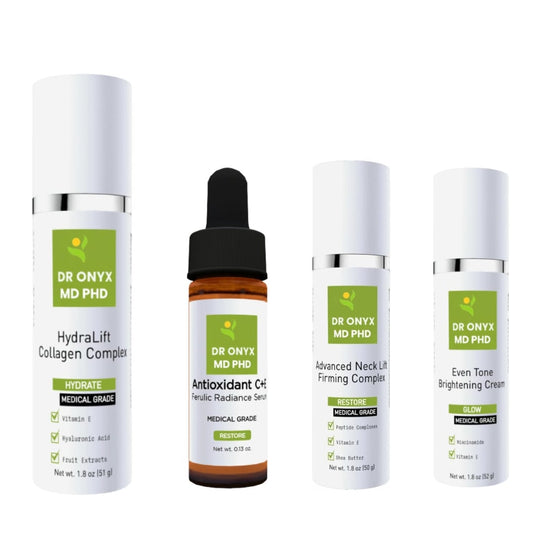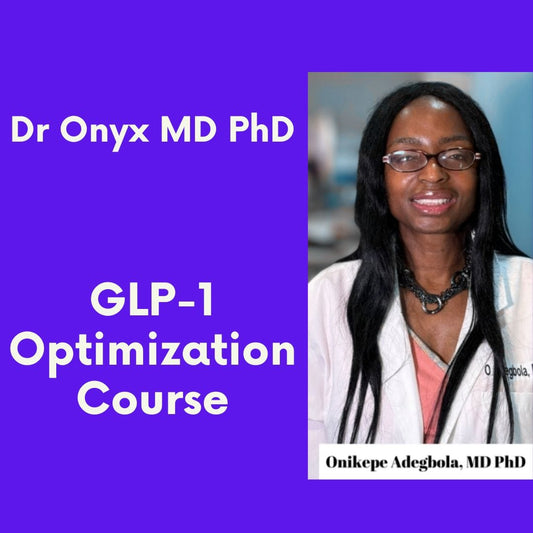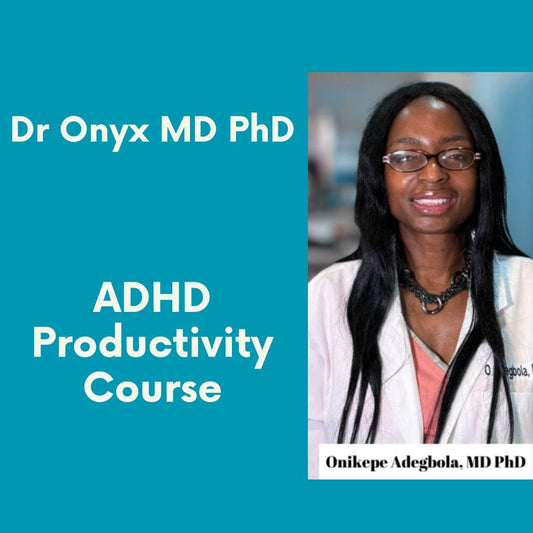How to Be Successful on GLP-1: A Comprehensive Guide to Maximizing Results
GLP-1 medications like Ozempic, Wegovy, and Mounjaro have revolutionized weight management, offering many people a powerful tool in their health journey. But success with these medications isn't automatic—it requires a thoughtful approach that extends beyond simply taking your weekly injection. Whether you're just starting or have been on a GLP-1 for months, understanding how to optimize your experience can make the difference between modest results and transformative outcomes.
This comprehensive guide will walk you through evidence-based strategies to maximize your GLP-1 results, minimize side effects, and create sustainable habits that support your long-term success. From nutrition and exercise to mindset and medical considerations, we'll cover everything you need to know to thrive on your GLP-1 journey.
Understanding How GLP-1 Medications Work
Before diving into strategies, it's important to understand what's happening in your body when you take a GLP-1 medication. These drugs mimic a natural hormone called glucagon-like peptide-1, which regulates blood sugar and appetite. When you inject a GLP-1 medication, it slows gastric emptying (making you feel fuller longer), reduces hunger signals in your brain, and helps regulate blood sugar levels.
This biological action creates a window of opportunity where eating less becomes physiologically easier—but it doesn't automatically change your food choices, activity levels, or emotional relationship with food. That's where your active participation becomes crucial for long-term success.
The Difference Between Various GLP-1 Medications
Not all GLP-1 medications work exactly the same way. Semaglutide (Ozempic, Wegovy), tirzepatide (Mounjaro, Zepbound), and liraglutide (Saxenda) have different molecular structures, half-lives, and sometimes different mechanisms of action. Tirzepatide, for example, works on both GLP-1 and GIP receptors, potentially offering stronger effects on weight loss for some patients.
understanding your specific medication helps set realistic expectations. While average weight loss on semaglutide is around 15% of body weight after one year, tirzepatide studies have shown average losses closer to 20%. Your provider can help you understand what might be realistic for your specific situation and medication.
Nutrition Strategies for GLP-1 Success
Nutrition becomes even more important—not less—when taking GLP-1 medications. With reduced appetite and food intake, making every bite nutritionally dense becomes crucial for preventing nutrient deficiencies and preserving muscle mass during weight loss.
Prioritizing Protein Intake
Protein should become your nutritional priority on GLP-1 medications. Research suggests aiming for 1.2-2.0 grams of protein per kilogram of ideal body weight daily. This higher protein intake helps preserve lean muscle mass during weight loss, keeps hunger at bay between meals, and requires more energy to digest than other macronutrients.
Practical ways to increase protein include starting each meal with the protein portion, keeping ready-to-eat protein sources available (Greek yogurt, cottage cheese, pre-cooked chicken, protein shakes), and being strategic about your limited appetite by eating protein before carbohydrates or fats.
Managing Portion Sizes and Meal Timing
Many people on GLP-1s find they need to completely rethink portion sizes. What once felt like a normal meal might now feel overwhelming. Instead of three large meals, consider 4-6 smaller, nutrient-dense meals spread throughout the day. This approach can help you meet nutritional needs despite reduced capacity and appetite.
Pay attention to your body's new hunger and fullness cues. The medication creates a stronger sensation of fullness, so stopping eating when comfortably satisfied (rather than completely full) helps prevent nausea and discomfort while still supporting weight loss goals.
Foods to Emphasize and Avoid
Focus on nutrient-dense whole foods that provide maximum nutrition in smaller volumes: lean proteins, vegetables, fruits, healthy fats, and high-quality carbohydrates. Many GLP-1 users report that highly processed foods, very fatty meals, and simple carbohydrates can trigger nausea or discomfort, especially in the days following injection.
Hydration becomes particularly important, as dehydration can worsen constipation—a common side effect. Aim for at least 64 ounces of water daily, and consider tracking your intake until adequate hydration becomes habitual.
Physical Activity for Enhanced Results
Exercise complements GLP-1 medications beautifully, enhancing their effectiveness and addressing one of their potential drawbacks—muscle loss during rapid weight reduction. A comprehensive exercise approach can significantly improve your overall results.
Resistance Training to Preserve Muscle Mass
Resistance training becomes especially important on GLP-1 medications. When losing weight rapidly, your body may break down muscle tissue along with fat, particularly if protein intake is inadequate and resistance training is absent. Aim for at least 2-3 strength training sessions weekly, targeting all major muscle groups.
You don't need a gym membership to get started. Bodyweight exercises, resistance bands, or household items can provide effective resistance. The key is progressive overload—gradually increasing the challenge to your muscles over time through heavier weights, more repetitions, or more challenging variations.
Cardiovascular Exercise for Metabolic Health
While GLP-1s improve many markers of metabolic health on their own, adding cardiovascular exercise enhances these benefits. Cardio improves insulin sensitivity, heart health, and can help create a larger calorie deficit for weight loss. Both moderate-intensity steady-state cardio (like brisk walking or cycling) and high-intensity interval training have benefits.
Start where you are—even 10-minute walking breaks throughout the day count. Gradually build duration and intensity as your fitness improves. Many people find their exercise tolerance and enjoyment increases as they lose weight on GLP-1 medications, creating a positive feedback loop.
Managing Side Effects Effectively
Side effects are common with GLP-1 medications, especially during the initial weeks and after dose increases. Having strategies to manage these effects can improve your quality of life and help you stay consistent with your medication.
Addressing Nausea and Digestive Issues
Nausea affects up to 40% of GLP-1 users, particularly in the first few weeks. Practical strategies include eating smaller, more frequent meals; avoiding fatty, spicy, or very fibrous foods immediately after injections; taking the medication at bedtime; and staying well-hydrated. Some providers may recommend anti-nausea medications for the initial adjustment period.
Constipation is another common complaint. Increasing water intake, incorporating moderate fiber (too much can worsen symptoms for some), and regular physical activity can help maintain regularity. Magnesium supplements or mild osmotic laxatives may be recommended by your healthcare provider if needed.
Monitoring for Serious Side Effects
While most side effects are manageable, some require immediate medical attention. Severe abdominal pain that doesn't resolve, especially if accompanied by vomiting, could indicate pancreatitis—a rare but serious complication. Similarly, any symptoms of allergic reaction, such as rash, itching, swelling of the face or throat, or difficulty breathing, warrant emergency care.
Regular check-ins with your healthcare provider are essential, especially during the first few months. Be thorough in reporting any unusual symptoms, even if they seem minor. Early intervention can prevent complications and help adjust your treatment plan if needed.
Psychological Aspects of GLP-1 Success
The psychological journey on GLP-1 medications can be as significant as the physical one. Many users report profound changes in their relationship with food, hunger cues, and body image that require adjustment and reflection.
Developing New Food Relationships
GLP-1 medications create a unique opportunity to reset your relationship with food. Without the intense hunger and cravings many people have struggled with for years, you can develop more mindful eating practices. Take time to savor smaller portions, eat without distractions, and truly notice when you're satisfied rather than stuffed.
This transition can be surprisingly emotional. Some people describe grief over losing food as a coping mechanism or social centerpiece. Others experience guilt about "needing medication" to control their eating. Working with a therapist who specializes in weight management can be invaluable during this transition.
Long-Term Planning and Sustainability
Perhaps the most important aspect of GLP-1 success is planning for the long term. These medications are most effective when viewed as tools within a comprehensive lifestyle approach, not temporary fixes.
Planning for Maintenance
Research shows that when GLP-1 medications are discontinued, weight regain is common—often returning to 2/3 of the lost weight within a year. This isn't failure; it's biology. The medications suppress appetite hormones and increase satiety signals that return to baseline when the medication is stopped.
Many healthcare providers now view obesity as a chronic condition requiring ongoing management, similar to high blood pressure or diabetes. Discussing a long-term plan with your provider is essential. This might include continued medication (possibly at a reduced maintenance dose), regular monitoring, and having strategies ready if weight begins to increase.
Building Sustainable Habits
Use your time on GLP-1 medications to build sustainable habits that support long-term health. This includes establishing consistent exercise routines, learning to prepare nutritious meals you genuinely enjoy, developing stress management techniques, and improving sleep quality. The medication provides a biological advantage that makes building these habits easier than it might have been previously.
Document what works for you—the foods that satisfy you without causing discomfort, the exercise routines you can maintain consistently, the strategies that help you navigate challenging situations like restaurants or holidays. This personal data becomes invaluable for long-term success.
Conclusion
Success on GLP-1 medications comes from a thoughtful partnership between medical intervention and personal effort. The medications create a biological environment conducive to weight loss and improved metabolic health, but your daily choices regarding nutrition, physical activity, and psychological approach determine how profound and sustainable your results will be.
By understanding how these medications work, optimizing your nutrition, incorporating appropriate exercise, managing side effects proactively, addressing the psychological aspects of your journey, and planning for long-term success, you can maximize your results and transform your health trajectory. Remember that this journey is uniquely yours—what works best will be the approach you can maintain consistently while enjoying your life along the way.

















